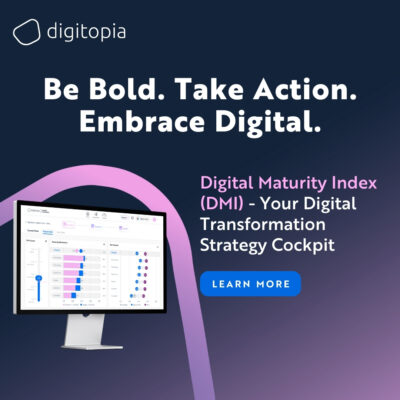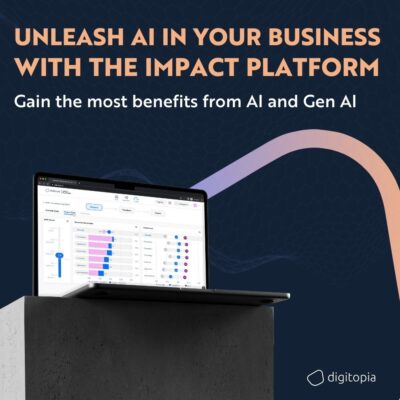
Listen on
Episode Description
You’ve built high-performing teams, delivered results, and hit every milestone—so why does the organization still feel stuck?
In this episode of Executive Shift, we explore one of the most underestimated leadership challenges in digital transformation: organizational silos. These invisible barriers between departments don’t just create inefficiencies—they can completely paralyze executives and block even the most well-defined strategic goals.
We walk through a real-world scenario where a leadership team with a strong vision struggles to execute due to internal misalignment. Despite talented teams in software, hardware, and customer service, progress stalls as each function pulls in a different direction. What unfolds is a familiar pattern: strategy breaks down, communication gaps widen, and executive energy gets drained by internal friction instead of future-focused leadership.
This episode delivers essential insights for executives navigating:
- Digital transformation and operational misalignment
- Cross-functional collaboration and team integration
- Communication breakdowns and decision-making delays
- Unlocking strategic momentum by dismantling silos
- Building a leadership culture around visibility, trust, and shared goals
We share tactical solutions used to regain momentum—including weekly leadership forums and company-wide visibility tools—that foster alignment and rebuild cohesion. You’ll also hear why siloed organizations struggle to adopt AI, lose top talent, and fall behind in fast-moving markets.
If your organization feels like it’s moving in circles despite strong performance on paper, this episode offers a practical lens into what’s really holding you back—and how to move forward.
Episode Transcript
Adapting the C-Suite to the Digital Age
Welcome. You’re probably listening because you’re there at the sharp end of leadership, navigating, well, everything AI is throwing at us. And you likely feel that the old ways of leading, maybe they don’t quite cut it anymore.
Today in this deep dive, our mission is pretty clear. Let’s figure out why those traditional leadership models seem to be faltering in today’s business world. And what needs to change for companies to actually thrive. We’ll look at some modern management ideas, some evolving business practices, let’s jump in.
It really is striking, isn’t it, that gap between the kind of management thinking that dominated for well generations? And what’s needed now in this AI driven age, we’re essentially moving from ideas born in the industrial revolution to needing a mindset that works for algorithms and, frankly, exponential change.
Let’s unpack that legacy a bit. We’re talking Frederick Taylor, Taylorism. That whole system, breaking work down, strict hierarchies tight control, all aiming for maximum efficiency. And it worked. I mean, it delivered huge productivity gains back then.
From Taylorism to Transformation: The Limits of Control
Taylor’s scientific management, it was crucial for optimizing factories, early 20th century stuff that focus on standardization, measuring output. It definitely boosts efficiency, but the limitation really glaring today is that it kind of treated human creativity as another predictable input.
It unintentionally squashed the autonomy, the ingenuity that we now see as critical. So the efficiency tailor aim for, ironically, created a kind of systemic inefficiency in using human potential today, where being adaptable is often more valuable than predictable output.
And that really hits the core tension now, doesn’t it? In a world that demands constant innovation, quick adaptation that old command and control structure, it feels it’s actively getting in the way.
It seems to create organizational drag, a resistance to the very things defining our time, AI, digital transformation, intense competition. It’s not about dismissing Taylor’s historical role, obviously, but sticking rigidly to those models now.
Well, as our sources suggest, it’s driving companies to a relevance. And if you connect that to the bigger picture, the flaws in Taylorism become even clearer. Information, ideas, they mostly flow top down. It often missed the valuable insights from people on the ground, the intelligence you really need to navigate the complexity and speed we face today.
Which brings us naturally to the need for modernization, to thinkers Professor Hamill. Professor Gary Hamel, management 2.0, that feels a really direct response to the limits we were talking about. It pushes for agility, resilience, and fundamentally empowering the workforce.
Modern Management 2.0: Empowerment and Agility
And it seems that really clicks with younger generations, doesn’t it? People looking for purpose for some autonomy, which those traditional models didn’t really offer. Well, what’s interesting is the basic philosophical shift, management 2.0 isn’t about news software or process tweaks. It’s about admitting that in a complex, fast changing world, you actually get better results with distributed intelligence, with decentralized decisions, rather than relying solely on the top of the pyramid.
Harris is a fascinating example here. Harris, the appliance giant. It broke itself up into thousands of small self-managing teams. These microenterprises, such a powerful example of empowerment, employees acting almost entrepreneurs within the company.
That structure must breed a pretty amazing culture of innovation. Because Harris moved wasn’t about getting new ideas. It was about cutting down the time lag, wasn’t it?
Between seeing an opportunity and actually doing something about it, that seems vital now, with AI.
Real-World Case Studies: Harris, Buurtzorg Nederland, and More
It does. By pushing decisions down to those smaller units, Harris created this environment where ideas can pop up and get tested much faster. That entrepreneurial spirit, but spread throughout the organization that’s a serious competitive edge today.
And it’s important to note, this isn’t for tech companies. Look at Buurtzorg, the Dutch Home Care Group using self-managed nursing teams. That would really caught my eye because healthcare often seems so traditional, so structured. But by empowering nurses to organize their own work, make decisions. They saw huge jumps in employee satisfaction in patient care quality. It really shows these ideas and empowerment distributed decisions they can work across all sorts of sectors.
And that evolution naturally connects to another big shift in modern management.
Purpose Beyond Profit: The Rise of Stakeholder Capitalism
Moving past, focusing on shareholder value. Professor Michael Porter’s work on stakeholder capitalism and his framework, creating shared value (CSV) really highlights this. Porter’s argument is that leading companies now get that they need to think broader. Consider employees, customers, communities, the environment, not shareholders. And his CSV idea makes a strong case that tackling social and environmental issues isn’t charity. It can actually open up new ways to succeed economically.
It’s not profit versus purpose; it’s finding the link between them. And you see companies Unilever and Patagonia really putting this into action. Unilever sustainable living plan, that’s a huge corporation, integrating sustainability into its core strategy. And they see benefits in brand reputation, customer loyalty, even employee engagement.
And Patagonia, their whole identity is built around environmental commitment. It’s deep. That creates an incredibly strong purpose driven brand that obviously resonates with certain consumers.
I bet it makes them a magnet for talent too. People who want more than a paycheck.
What the Next Generation Expects from Employers
These aren’t PR stunts, are they? They seem real drivers of long-term business value. They really are. These companies show that aligning profit and purpose can create this positive feedback loop making them stronger and more resilient overall. Flip side.
What happens if companies don’t make these kinds of shifts? What are the risks of stagnating? Well, the sources we looked at are clear on that. Big problems attracting talent, especially younger, skilled people, crucial in the AI era. You mentioned that Deloitte survey over 70% of millennials and Gen Z looking at a company’s social and environmental impact when deciding where to work. That’s a huge warning sign for businesses stuck in old ways.
It is, and it’s not getting them in the door, it’s keeping them. Employees who feel aligned with the company’s values, who feel their work matters beyond the bottom line. They’re likely to be more engaged, more motivated, and stick around longer.
Plus, as we touched on, customer expectations are changing too.
How Legacy Management Blocks AI Innovation
Today’s consumers, especially younger ones, they’re digging deeper. They want transparency, accountability. They’re actively choosing brands that show real commitment to doing good socially and environmentally. Companies ignoring that risk being left behind by competitors who are tuned in.
And maybe the most critical point for our discussion today, those rigid top-down management structures, they seriously hamper agility, adaptability. These organizations often struggle to really embrace and use disruptive tech like AI effectively. They find it hard to innovate, hard to respond quickly to market shifts and that lack of nimbleness.
Ultimately, it could threaten their very survival long term. For the senior leaders listening, the ones may be thinking, we need to change.
What are some practical first steps? How do you start this kind of transformation?
First Steps to Building a Future-Ready Company
Well, based on what we’ve seen, there are a few key actions.
First, moving to a genuine, purpose driven model. Clearly defining a company mission that goes beyond profit. Think about Microsoft shift, empower every person in every organization on the planet to achieve more. That’s powerful for engagement and attracting talent. Moving from products to a bigger why.
And then you mentioned empowering employees, getting away from commanding control, building trust, autonomy, Netflix is often cited here. Their freedom and responsibility culture. It seems key to how they stay agile and creative. Giving people the room, the resources, the trust to make decisions and innovate, it’s not optional anymore, it’s essential.
Another big one is adopting Agile Management Practices. Moving from those slow, rigid hierarchies to more flexible collaborative setups. Think about ING Bank reorganizing into agile squads and tribes. It’s a real world case of speeding up product development, becoming more responsive.
And obviously embracing sustainability and stakeholder focus, really weaving it into the business fabric. IKEA aiming to be climate positive by 2030. That doesn’t help the planet. It builds a loyal customer base that cares about those things.
Final Reflections: What Boards Must Unlearn
And finally, maybe underpinning all of this is measuring what matters. As Digitopia points out, you need clear transparent metrics tied to your purpose. Your sustainability goals, your management changes. That’s how you ensure accountability and show your series about it.
It seems pretty clear then. As we navigate this era, especially with AI accelerating everything, clinging to old industrial age management styles, it’s not going to work.
We’ve talked about the limits of Taylorism now, the potential in management 2.0 and this growing need for stakeholder capitalism, these aren’t trends, are they? They feel fundamental shifts in how successful sustainable businesses need to operate.
Indeed, the transformation we’re discussing, it’s not a nice to have for progressive companies, it really feels a core requirement for lasting success in relevance in a business world being reshaped by agility, by purpose, and by a broader sense of responsibility.
As we wrap up this deep dive, thinking about leadership’s evolution and AI’s huge impact, here’s a final thought, a question really for you listening, especially those in boardroom’s guiding organizations. What fundamental assumptions about leadership itself, but organizational structure, maybe even about the core purpose of a company.
What assumptions must boards unlearn? What do they need to let go of to effectively steer their companies towards relevance, towards success in this fast moving AI powered future?
It’s definitely something worth reflecting on as we all navigate this Argo and Journey of Change, a journey that really needs to be both purposeful and as you said rigorously measured.






